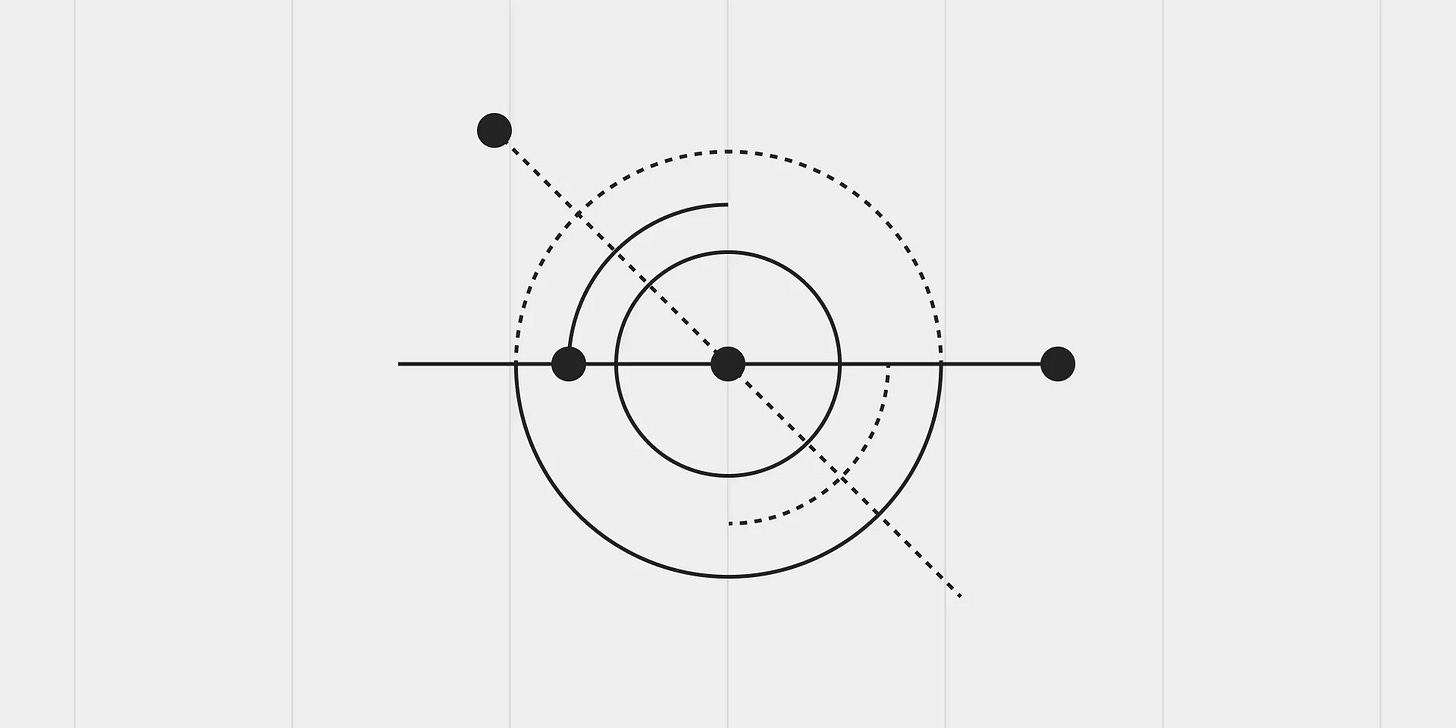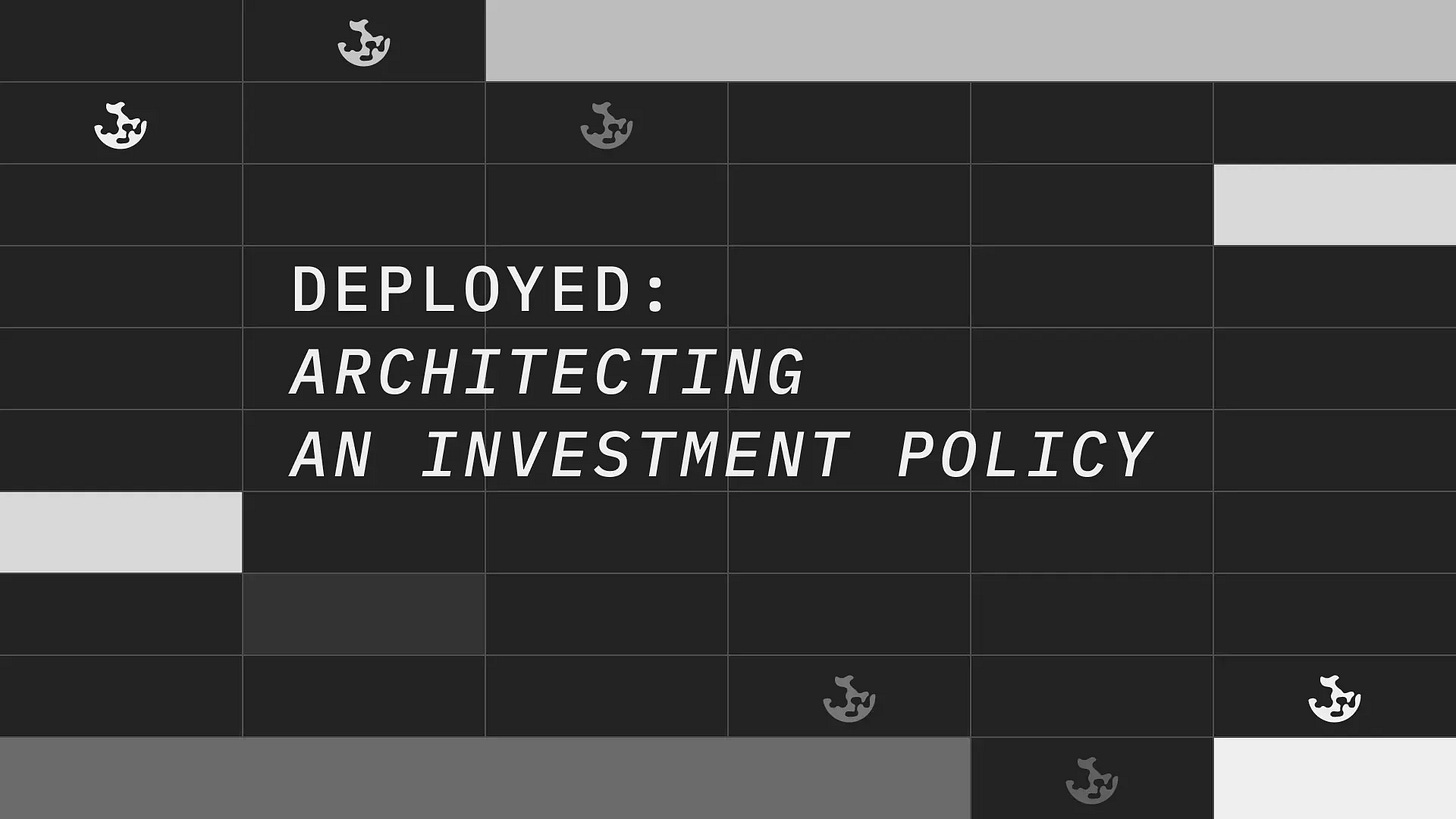kpk governance newsletter: June 2025
Your essential guide to DAO governance proposals, initiatives and innovation
Hello, community!
Welcome to the June issue of our Governance Newsletter.
The times are a-changin’. Another conference season is heating up (alongside temperatures in Europe and North America), and the embers of our face-to-face meetings and public debates are helping to forge new ideas and experiments to push DeFi governance forward.
This month, we highlight experiments in futarchy—a radical emerging approach to decentralised decision-making that’s beginning to take off. We also explore proposals to refine operations and business models across CoW, Safe, Balancer and Arbitrum.
There’s a lot to get into, so let’s get right to it:
Here we go. 🚀
Headline: The Futarchy Is Now
The way that decentralised organisations make decisions is about to change forever…
Futarchy is a form of governance that focuses on the pursuit of success metrics to achieve a body’s goals, and using prediction markets to gauge the consensus on which actions are most likely to achieve them.
The idea is to move forward from pure values-based voting (i.e. what you’d like to see) towards betting on beliefs (i.e. what you expect and how certain you are of it). This helps to move past unproductive disagreement, and provides incentives to improve the quality of information.
In an academic sense, DAOs have come to be seen as a fertile breeding ground for the development of futarchy, in light of (i) their significant demands for collective decision-making, (ii) the inherently technical nature of their setup and audience, and (iii) the typically open view of their constituents to new economic, political and social constructs.
However, actual adoption has been limited. Gnosis began as a prediction market project and pioneered the category, before finding greater demand for the infrastructure they’d built to support prediction markets than the actual markets themselves. But early is not necessarily wrong… and several events in June signalled an acceleration in futarchy’s rise:
Optimism DAO concluded a 6-month futarchy experiment using Butter, which aimed to drive TVL growth on OP Mainnet by having users estimate the likely growth per protocol. This was contrasted with a values-based allocation from the Grants Council, testing if futarchy produced meaningfully better results. Futarchy outperformed values-driven allocations by a factor of 4.9x ($26 million more incremental TVL gains).
The Uniswap Foundation kicked off a similar experiment with Butter, again focused on driving TVL growth for Unichain by having users estimate likely growth. With learnings from Optimism, Uniswap will add skin in the game by having markets operate on USDC (where Optimism used a valueless test token), and will split the process into two rounds of markets, including a shorter month-long initial round aimed at rapid feedback and iteration.
Futarchy.fi—a project founded by futarchy’s creator Robin Hanson—announced its upcoming launch with initial prediction markets for GnosisDAO. The announcement came at DappCon 2025 in Berlin, where Hanson appeared alongside Gnosis co-founder Martin Koeppelmann, Vitalik Buterin and Joe Lubin for a fireside chat about onchain applications.
Though prediction markets like Polymarket saw significant commercial success in 2024 around the US election, the question of whether (and when) prediction markets may begin to redefine public governance is still very much an open one.
However, with three leading DAOs and two exciting new applications suddenly reanimating the charge towards Futarchy, it’s beginning to feel like 2025 may be a pivotal year in the development of this new technology. Time will tell…
Key Topics & Proposals
Safe: Decentralising The Transaction Service
SafeDAO is exploring the proposed decentralisation of its transaction relay system (”Transaction Service”) to unlock a sustainable revenue model for the SAFE token.
Currently, all Safe frontend transactions are routed through the centralised Service, which creates a critical point of failure and exposes users to value extraction risks. The Transaction Service is used by hundreds of teams to manage assets through their Safe Smart Accounts.
The proposal introduces the idea of a decentralized, privacy-first relay network that would charge a small “Safety & Privacy Fee” per transaction. These fees would be distributed to SAFE token stakers and relayer operators, delivering real economic utility and aligned incentives to the project’s stakeholders.
The model would also grant everyday users access to the same privacy enjoyed by institutional actors, while integrating all activities seamlessly into the Safe frontend. It would be an opt-in service, allowing for gradual adoption without disrupting current workflows.
To implement this vision, new infrastructure is needed, including relayer networks, UI integrations, and staking contracts. However, despite the buildout required, the plans would be among the first to generate durable, mission-aligned revenue and meaningfully improve the resilience of Safe’s protocol and infrastructure.
Balancer: Process Upgrades
For Balancer DAO, June saw a raft of significant upgrade proposals for internal processes and policies, all aimed at improving the DAO’s governance, security and asset management systems:
Governance Process Guidelines - a comprehensive new framework has been introduced to enhance the transparency, structure, and reliability of Balancer’s governance. The guidelines define clear timelines, validation requirements, and execution standards to ensure proposals are thoroughly reviewed and efficiently implemented.
Sub-roles Architecture - the DAO’s existing range of onchain permissions will be upgraded to add sub-roles capabilities. This allows for roles to be delegated to be managers to sub-accounts, which facilitates rapid response capabilities and advanced automation. For more on the inner workings of Sub-roles, read our article.
Investment Policy Statement - a new investment policy statement (IPS) sets out the DAO’s expectations and guidance for the management of its treasury and the roles of key stakeholders. IPSs help to clarify difficult questions before issues arise, minimising the space for future disagreement or misalignment. Check out our article on IPSs to learn more.
Arbitrum: OpCo Operating Capabilities
Last month, Arbitrum DAO began deliberations about updating the recently-created operating company (OpCo)’s operating capabilities. After electing its initial council, the OpCo reviewed its original mandate and found multiple restrictions limiting its ability to act proactively and attract top talent.
The proposed updates would allow OpCo to contract service providers, issue grants for exploratory initiatives and broaden its mandate beyond ecosystem support and financial management. The changes also enable more competitive compensation structures and relax eligibility rules for council elections—making space for more qualified contributors to participate without unnecessary disqualification.
Together, these reforms aim to position OpCo as a flexible, forward-looking executor of DAO strategy. With discretionary funding, improved hiring capacity, and wider autonomy, OpCo could help the DAO move faster and test new ideas without waiting on full votes. A governance vote to enact the changes is scheduled for June 12, 2025, pending community support.
CoW: Fair Combinatorial Auctions
CoW DAO executed CIP-67 in June, a proposal to replace its batch auction model with a fair combinatorial auction, aimed at improving throughput and fairness. The new system lets solvers submit multiple bids—both individual and grouped—where the protocol may then select combinations that generate the most surplus, while ensuring each order receives at least as good an outcome as it would alone.
Simulations show increases to throughput of ~33%, and solver rewards of 25%, as well as a more equitable distribution of surplus without needing extra token emissions. The switch also removes the need for the current “Ethereum Best Bid and Offer” (EBBO) fairness test, which has been a significant cause of operational overhead and centralisation risks.
While the model introduces more complexity, a simple heuristic for selecting winners performs nearly as well as full combinatorial maximisation, making the rollout both feasible and desirable. The upgrade was completed and went live within June, marking a major step forward in CoW Protocol’s design.
CoW x Balancer: Token Swap
In June, CoW DAO and Balancer DAO also executed a strategic token swap to strengthen their partnership around CoWAMMs—the first “loss versus rebalancing” (LVR)-resistant automated market maker.
The swap involved ~$540k worth of tokens each (200k BAL for ~631k COW), evaluated using a 30-day time-weighted average price. Tokens will be locked for two years, with both DAOs retaining governance rights—allowing CoW to join veBAL and Balancer to participate in CoW governance.
This marks the latest chapter in the pair’s long-standing collaboration. CoWAMMs launched in 2024 and have already reached over $25M in TVL and $50M+ in volume. Built on CoW Protocol’s solver auctions, these pools offer traders resistance from block producer value extraction (MEV) and better pricing for liquidity providers. The token swap formalises this relationship and equips both DAOs with incentives to fuel the next wave of CoWAMM growth.
The swap was carried out using a trusted escrow contract model, first used in Balancer’s Aave token swap. It guarantees atomic execution and includes a minor adjustment for CoW DAO’s funding setup. With aligned incentives, governance access and a compelling product strategy, both DAOs are now well-positioned to scale CoWAMMs and pioneer new forms of DeFi trading.
At a Glance: The DeFi Treasury Network
Check out the latest metrics showcasing kpk’s impact across our network of partner DAOs.
kpk: Investment Policies
Last month, kpk laid a particular focus on the value of investment policies for decentralised organisations, and the best practices we incorporate into our own investment policy statements (IPS).
In our explainer article, we walked through some best practices and a case study of the ENS DAO IPS, which we helped to prepare. ENS’s endowment is governed by specific norms on the treatment of Ether, unearned revenue from domain-name registrations, and its required stable operating capital. Their IPS is the perfect blend of open, flexible design with tailored, detailed commitments.
A couple of weeks later, we were proud to announce a new advisory role working with the Ethereum Foundation (EF) to help craft their new Treasury Policy. The EF adopted a novel approach to onchain asset management, leading with value-alignment in the protocols they use. To identify aligned projects, the EF coined the term “defipunk”, a cipherpunk vision for the future of DeFi. They also provided a set of criteria to help scope out alignment.
As other leading organisations like Balancer also adopted IPSs, and we worked with popular media outlets to spread the word, we see the increasing adoption of investment policies as a clear indicator for the gradual maturation of our industry.
We hope our work will help to elevate standards and best practices for onchain asset management.
That’s it for the first half of 2025. Our thanks for your continued support as we’ve continued to build out this newsletter. We’d love to hear your thoughts and feedback in the comments, to help us continue sharpening our skills.
If you like what you see and would like to get more involved with kpk, check out our range of open positions for new contributors and reach out to us through our website or social media with any questions.
Thanks for joining us 🙏
Read More
Optimism: Futarchy Experiment | Butter
Uniswap: Futarchy Experiment | Butter
Gnosis: Futarchy.fi Partnership
Arbitrum: OpCo Updates | OpCo Vote
Balancer: Governance Process | Sub-Roles | IPS | Token Swap
Investment Policies: Explainer Article | EF Article






